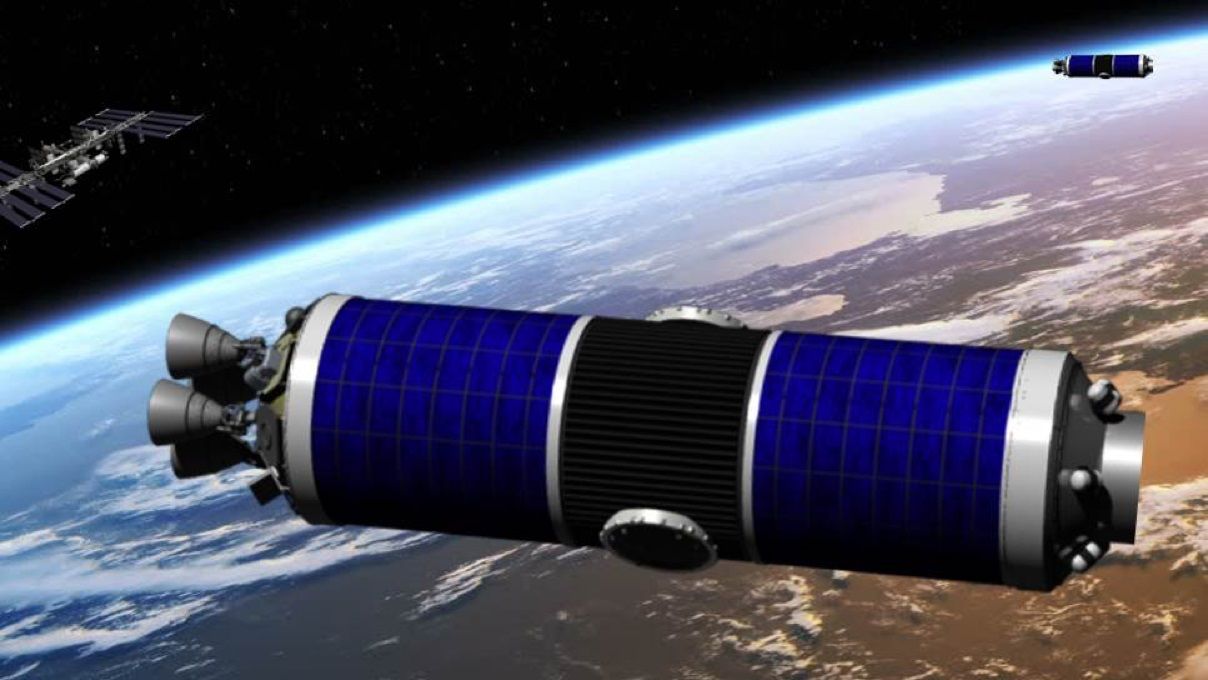Texas-based NanoRacks is fine-tuning and rebranding its concept for turning upper-stage rocket boosters into orbital outposts, starting with a habitat called Independence-1.


From research labs to factories, farms, and even our own homes, robots are everywhere these days. But which are the most important robots ever built? We decided to welcome our new robot overlords with just such a list. Read on to discover which robots we owe a debt of a gratitude for their part in turning science fiction into, well, science.
SpotMini attends MIT 6.S099: Artificial General Intelligence https://agi.mit.edu Thanks to our friend from Boston Dynamics for the visit. Notes: There’s no audio. SpotMini’s movements are not sped up. All were performed live in front of a packed house of students. It was amazing to witness in person.
If you enjoyed this video, please subscribe and connect with me:
LinkedIn: https://www.linkedin.com/in/lexfridman
Twitter: https://twitter.com/lexfridman
Facebook: https://www.facebook.com/lexfridman
Instagram: https://www.instagram.com/lexfridman
Web: https://lex.mit.edu
Boston Dynamics: https://www.bostondynamics.com
The plan to launch the module into space, and take reservations from customers for multimillion-dollar trips, was announced today at the Space 2.0 Summit in San Jose, Calif.
Orion Span says its hotel habitat, dubbed Aurora Station, will be about the size of a large private jet’s cabin, with 5,650 cubic feet of pressurized space. It’ll accommodate up to six residents at a time, including two professional crew members.
The flight plan calls for the module to be launched into a 200-mile-high orbit in late 2021, and host its first guests in 2022.

Tiangong 1, China’s fallen space station, is now in pieces somewhere on the floor of the Pacific Ocean, but it’s hardly the last spacecraft that will plunge to earth. In fact, by the end of the week, three more are expected to re-enter the atmosphere.
Two pieces of space junk from Kazakhstan and one from India are headed home, part of the surprisingly regular amount of cosmic debris that falls to earth each year. The first could occur as early as tomorrow evening, according to Satview.org.
PSLV R/B, an Indian spacecraft that was launched Nov. 4, 2013, is expected to reenter the atmosphere at approximately 6:30 p.m. ET Tuesday. That will be followed Wednesday at 7:30 p, m, ET by FLOCK 2E-3, a Kazakh spacecraft that has been orbiting earth since Nov. 19, 1998. Finally, Friday morning at approximately 10:24 a.m. ET, FLOCK 2E’-6, another Kazakh orbital will fall to earth.
Through a pilot program between the city of South Burlington and Propy, a blockchain platform designed to facilitate real estate transactions, a Vermont woman became the first person in the U.S. to sell a home using blockchain.
On February 20, Vermonter Katherine Purcell did something extraordinary: She sold her home. And yes, people sell their homes every year—scores of them. But Purcell’s sale was fundamentally different: There’s a record of it on a blockchain.

I recently got a private tour of a NASA space shuttle’s cockpit, a quirky mosaic-covered LA home, and a peaceful chapel with light streaming through ornate stained-glass windows—all without leaving my chair.
That chair was in an office at Google’s Silicon Valley headquarters, and I was wearing an HTC Vive virtual-reality headset on my face. But because these places were filmed with a high-resolution prototype camera that reproduces some of the key cues we use to understand depth in the real world, it felt more like actually being there than anything I’ve experienced with any other live-action VR. Which is to say it was pretty damn cool.
I could peer around the seats in the space shuttle Discovery, revealing buttons and switches on the walls of the cockpit that were previously obscured. As I looked closely at mirrored bits of tile on the outside of the mosaic house, I glimpsed reflections of other tiles in the background and saw a dizzying display of shapes and patterns. In the chapel, I gazed at the floor, and the colorful sunbeams moved as I did.
Describing the bunker community as “large” is perhaps an understatement. “…This base is 18 square miles (47 square kilometers), about three quarters the size of Manhattan,” Vicino told RT’s Ruptly agency. He says the community has 575 bunkers and will be able to hold between 6,000 and 10,000 residents.
The motto “always be prepared” is wise advice, but one man is taking the mantra to the max. He’s got former military bunkers spanning a space that is three-quarters the size of Manhattan, and is selling them to survivalists.
Survivalists and so-called “preppers” are often the brunt of jokes, with insults ranging from “paranoid” to “weird” and everything in between. But Robert Vicino couldn’t disagree more. He runs a company which is currently focused on transforming military bunkers into doomsday shelters.
The shelters are in Middle of Nowhere, USA, otherwise known as Edgemont, South Dakota. It’s barely on the map, but it’s about to host the “largest survival community on the planet.” That’s big news for a town with a population of just 774 people.

Bricklaying robots could build your next home 5 times faster than a human. 🤖.